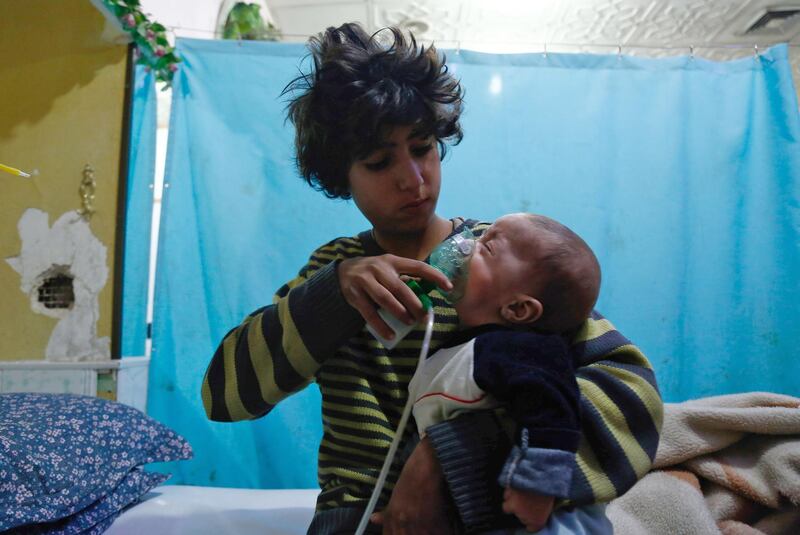The forces of Syrian President Bashar Al Assad fired chlorine, a banned chemical weapon, on a Damascus suburb and Idlib, the last rebel bastion in the country where the regime is preparing a major offensive, United Nations investigators said on Wednesday.
The three incidents bring to 39 the number of chemical attacks which the Commission of Inquiry on Syria has documented since 2013, including 33 attributed to the government, a UN official said. The perpetrators of the remaining six have not been sufficiently identified.
The UN Commission of Inquiry on Syria’s findings came on the same day that Syrian government forces shelled Idlib despite warnings from UN chief Antonio Guterres that a full-scale campaign there would trigger a “bloodbath”.
The commission also reported that levels of internal displacement for this year had not seen before in the seven-year conflict, as the regime and its backers – Russia and Iran – have stepped up their campaign to reclaim large areas of territory lost to rebels.
A series of defeats for the rebels have seen many evacuated in deals to Idlib, where government forces are massing ahead of an expected ground operation. The northwestern province and adjacent areas form the largest chunk of territory still held by the rebels and around three million people remain there.
The use of chlorine in Idlib this year is not the first time that regime forces are suspected of such an attack in the rebel-held area. In April 2017, a regime air strike released a toxic gas that killed at least 74 people, according to the UN and a series of Western and Middle Eastern governments.
Weaponising chlorine is prohibited under the Chemical Weapons Convention, ratified by Syria, and under customary international humanitarian law, the commission’s investigators said in their latest report.
"To recapture Eastern Ghouta in April, government forces launched numerous indiscriminate attacks in densely populated civilian areas, which included the use of chemical weapons," it said, referring to incidents on January 22 and February 1 in a residential area of Douma, Eastern Ghouta, outside the capital.
Women and children were injured in the attacks, suffering respiratory distress and requiring oxygen, it added.
"The Commission concludes that, on these two occasions, government forces and/or affiliated militias committed the war crimes of using prohibited weapons and launching indiscriminate attacks in civilian-populated areas in Eastern Ghouta," it said.
_______________
Read more:
Bombings in Syria's Idlib drive more than 30,000 from their homes
Foreign fighters in Syria's Idlib face last stand
Assad regime hits Idlib hospitals, first responders as latest Syrian offensive looms
_______________
A surface-to-surface, improvised rocket-assisted munition had been used in the two Douma incidents, it said. "Specifically the munitions documented were built around industrially-produced Iranian artillery rockets known to have been supplied to forces commanded by the [Syrian] government," the report said.
In Idlib, chlorine was also used on February 4, the UN report said.
"Government helicopters dropped at least two barrels carrying chlorine payloads in the Taleel area of Saraqeb," it said, adding that at least 11 men were injured.
"Documentary and material evidence analysed by the Commission confirmed the presence of helicopters in the area and the use of two yellow gas cylinders".
The report, based on 400 interviews, also examined aerial and ground attacks by Turkey's Operation Olive Branch, conducted with allied Syrian rebels, which wrestled the north-west Afrin region from Syrian Kurdish forces this spring.
Afrin's main hospital, a market and homes were hit, it said.
In the first six months of the year, more than one million people were displaced by six battles across the country, the report said.
Syrian government forces backed by Russia and Iran captured wide areas around the country from insurgents earlier this year.
The areas include southern regions near the borders with Jordan and the Israeli-occupied Golan Heights as well as eastern suburbs of Damascus known as eastern Ghouta.






